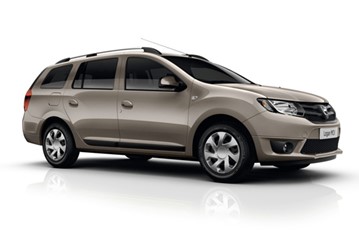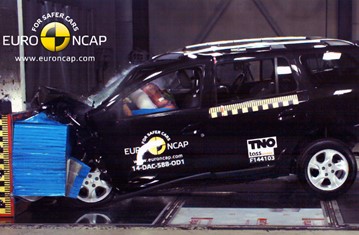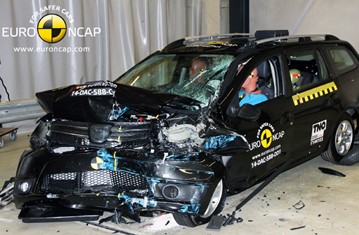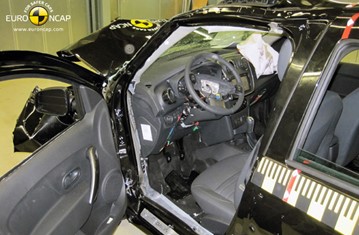Find more information in the General Comments section of the assessment
Find more information in the Rating Validity tab of the assessment
- See More
- See More
- See More
- See More
- Good
- Adequate
- Marginal
- Weak
- Poor
 Passenger
Passenger
 Driver
Driver
 Rear Seat
Rear Seat
 Front Seat
Front Seat
 Car
Car
 Pole
Pole
- Good
- Adequate
- Marginal
- Weak
- Poor


Passenger
outboard
center
Fitted to the vehicle as standard
Not fitted to the test vehicle but available as option
Not Available
-
Infants up to 13 kg
-
Infants and toddlers up to 18 kg
-
Toddlers from 9 to 18 kg
-
Toddlers over 18 kg
Easy
Difficult
Safety critical
Not allowed
| Seat Position | ||||
|---|---|---|---|---|
| Front | 2nd row | |||
| Passenger | Left | center | Right | |
| Maxi Cosi Cabriofix (Belt) | ||||
| Britax Römer King Plus (Belt) | ||||
| Britax Römer Duo Plus (ISOFIX) | ||||
| Britax Römer KidFix (Belt) | ||||
| Maxi Cosi Cabriofix & EasyFix (Belt) | ||||
| Maxi Cosi Cabriofix & EasyFix (ISOFIX) | ||||
| BeSafe iZi Kid X3 ISOfix (ISOFIX) | ||||
| Maxi Cosi Pearl & Familyfix (ISOFIX) | ||||
| Britax Römer KidFix (ISOFIX) | ||||
Easy
Difficult
Safety critical
Not allowed
Based on dummy readings in the crash tests, the Logan MCV scored maximum points for its protection of the 1½ year dummy. In the frontal impact, forward movement of the 3 year dummy, sat in a forward-facing restraint, was not excessive. However, tensile forces in the neck were high, losing all points, and forces in the chest were marginally so. The front passenger airbag can be disabled to allow a rearward-facing child restraint to be used in that seating position. However, the switch to change the airbag status is marked only by a removable label, and the system was not rewarded. All of the restraint types for which the car is designed could be properly installed and accommodated in the car with the exception of the semi-universal Group 0 restraint which uses a support leg. In the rear centre seating position this support leg cannot be properly installed because of the centre tunnel.
- Good
- Adequate
- Marginal
- Weak
- Poor

Head Impact 14.8 Pts
Pelvis Impact 0.0 Pts
Leg Impact 5.2 Pts
The protection offered by the bumper to pedestrians' legs was predominantly good or adequate. However, the front edge of the bonnet showed poor protection of the pelvis areas in all tests, and scored no points. The protection provided by the bonnet to a pedestrian's head was mainly good or adequate, with poor results recorded on the stiff windscreen pillars.
- Good
- Adequate
- Marginal
- Weak
- Poor
| System Name | ESP | |
| Performance | ||
| Applies To | Front seats | ||
| Warning | Driver Seat | Front Passenger(s) | Rear Passenger(s) |
| Visual | |||
| Audible | |||
|
|||
The Logan MCV has electronic stability control as standard. A seatbelt reminder for the driver and front passenger is also standard but there is no system for the rear seats. The Logan MCV does have a speed assistance system as an option but it is not expected to be fitted to the majority of vehicles sold so it was not included in the assessment. Neither a lane keeping assist system nor autonomous emergency braking are available.
- Specifications
- Safety Equipment
- Videos
- Rating Validity
Specifications
Tested Model Dacia Logan MCV 1.5 diesel Base, LHD
Body Type - 5 door wagon
Year Of Publication 2014
Kerb Weight 1216kg
VIN From Which Rating Applies - applies to all Logan MCV of the specification tested
Class Small MPV
Safety Equipment
Note: Other equipment may be available on the vehicle but was not considered in the test year.
Fitted to the vehicle as standard
Fitted to the vehicle as option
Not fitted to the test vehicle but available as option
Not Available
Not Applicable
Videos
Rating Validity







Find more information in the General Comments section of the assessment
 Share
Share










In the frontal impact test, the passenger compartment suffered extensive deformation and could clearly not withstand any further loading. There was a large fold at the top of the windscreen pillar and the bottom load path through the wheel and sill had lost its integrity, and the car was penalised. This penalty, together with dummy readings of chest compression, resulted in the driver's chest protection being rated as weak. Neither the driver nor the passenger seatbelt has a pretensioner. Dummy readings indicated good protection of the knees and femurs of the driver and passenger. However, structures on the driver's side of the dashboard - steering column, fuse box and brackets - presented a hazard to occupants of different statures and to those sat in different positions, and protection of the knees and femurs was rated as marginal. The rear mounting of the front lower subframe was pushed rearwards in the impact, rupturing the footwell area. Rearward movement of the clutch was 144mm and protection of the driver's feet and ankles was rated as weak. In the side impact, the seat-mounted head/thorax airbag deployed forward of the dummy's head and provided very little protection. While dummy readings were not excessive, a penalty was applied to the head protection in both the side barrier and pole tests owing to the incorrect deployment of the airbag in the side barrier test. In the pole test, dummy readings of rib compression indicated weak chest protection. The driver's seat was pushed sideways and covered the seatbelt buckle, which could not then be released. The seatbelt had to be cut in order to remove the dummy from the car. Tests indicated marginal protection against whiplash injury for the front seat occupants in a rear-end collision. A geometric assessment of the rear seats indicated poor whiplash protection.